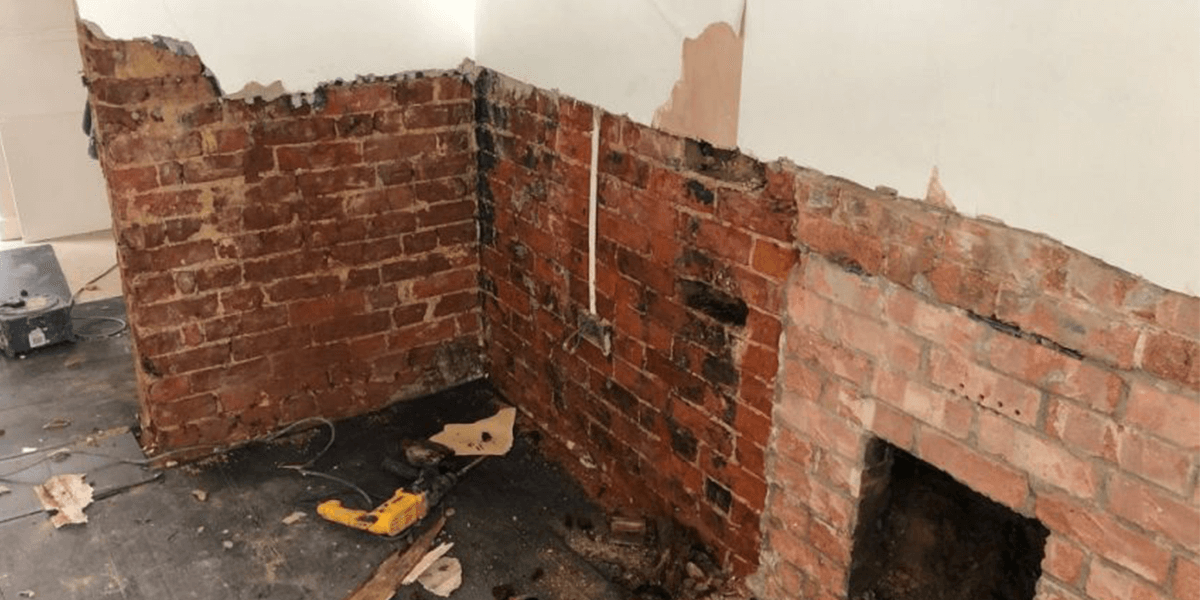Damp proofing the walls of your home should be done to prevent condensation and mould from forming.
Structural dampness due to condensation can ruin your home’s interior in a short span of time. The constant damp atmosphere will cause your paint to flake, plaster to crumble, your wallpaper to curl, and your skirting boards to rot.
Worse yet, prolonged exposure to mould spores can have adverse effects on your health. The World Health Organisation (WHO) has even stated that indoor fungal growth can cause allergic alveolitis among other respiratory problems.

What Causes Mold and Condensation?
Indoor condensation happens when water vapour accumulates due to the lack of ventilation. The accumulated water vapour within the home then condense on the cold spots of your walls.
Severe temperature difference between the inner and outer walls exacerbates the condensation problem even more. This excessive condensation causes structural dampness, which creates the perfect environment for mould to grow.
Preventing Damp and Condensation by Damp Proofing Walls
There is no singular solution to a complicated problem like structural dampness and mould. To deal with your condensation and mould problem, a specific solution tailored to your situation must be chosen. Said solution will be determined by the type of dampness affecting your property and the materials used in its construction.
Here are a few methods that can be used to prevent Damp, Condensation, and Mould:
1) Damp proofing walls – It is possible to prevent moisture from penetrating the interior spaces of your home through External Wall Insulation (EWI). Not only does EWI prevent outside moisture from getting in, it also prevents heat from escaping your home.
The warmth of your inner walls will prevent the moisture inside your property from condensing. No condensation means no dampness, and without structural dampness, mould can’t take root.
The great thing about EWI is that it’s non-intrusive and can be installed without disrupting your daily routine.
2) Damp-proof course (DPC) Injection – Moisture from the ground can also rise through your wall through capillary action in a phenomenon that’s been dubbed as “rising damp.”
Old buildings are especially susceptible to rising damp, and worse yet, it can’t be prevented by Exterior Wall Insulation. To remedy rising damp, a Damp-Proof Course must be horizontally or vertically injected into your internal wall. The DPC can’t be penetrated by moisture, protecting your wall from rising damp.
3) Damp-proof membrane (DPM) application – Moisture transmission through capillary action can also be prevented by a Damp-proof Membrane. An example of a DPM is polyethylene sheeting. This sheeting can be applied to walls during the construction of properties to ensure that unwanted moisture doesn’t penetrate their interiors.
If you want to know the best damp-proofing method to use on your property, send us a message at info@infinityenergyorganisation.com, or call us: 0203 638 4030.
Sources:
http://www.euro.who.int/__data/assets/pdf_file/0017/43325/E92645.pdf
https://www.epa.gov/mold/mold-remediation-schools-and-commercial-buildings-guide
https://ehs.colorado.edu/resources/mold-and-water-intrusion/
https://www.epa.gov/sites/production/files/2016-10/documents/moldguide12.pdf



